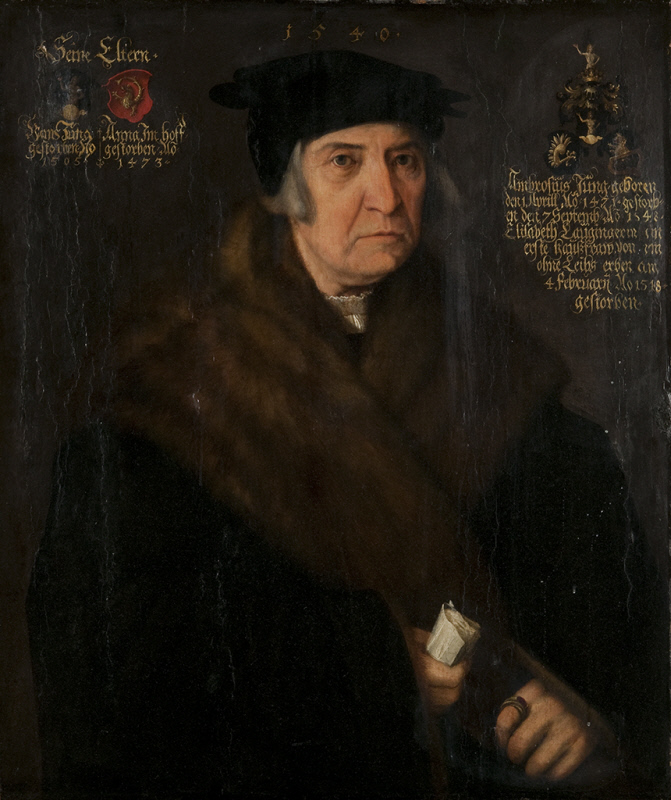
Little is known about the early life of German painter Christoph Amberger, including the date and place of his birth. His work shows the influence of Venetian painting, and it is thought that he spent some time in Northern Italy before settling in Augsburg, a lively cultural center and one of the largest and wealthiest cities in Germany in the 16th century. On May 15, 1530, Amberger was admitted into the city’s guild of painters and soon was among its most sought-after portraitists. His commissions included Emperor Charles V and several members of the powerful Fugger family.
The subject of this portrait is Ambrosius Jung, a highly respected physician in Augsburg and Emperor Maxmilian I’s personal doctor. He is identified by a lengthy inscription at the upper right, under a family crest that gives his name, his birth and death dates (April 1, 1471–September 7, 1548), as well as the name and death date of his first wife, Elisabeth Laugingerin. At the upper left appear his parents’ names, Hans Jung and Ann Imhoff, and their coats of arms. Above the sitter’s black cap is written 1540, presumably the work’s date. All of the inscriptions appear to be by a hand other than Amberger’s and must have been added after the completion of the painting, given that they include the sitter’s death date. Jung’s second wife, Magdalena Mannlichen, appears in a companion portrait also owned by the Menil Collection (1982-08.2).
In 1538 Jung was officially admitted to Augsburg’s peerage; however, he was refused entry to the city’s chamber of lords due to Mannlichen’s lower social status. They likely commissioned their portraits in reaction to this social discrimination. Both Jung and Mannlichen are pictured wearing dark robes with broad fur collars—garments that clearly identify the sitters as members of the upper class.